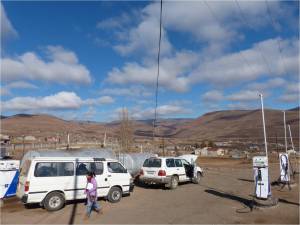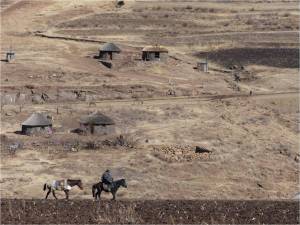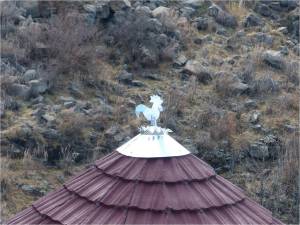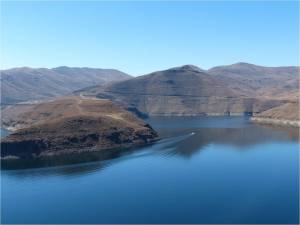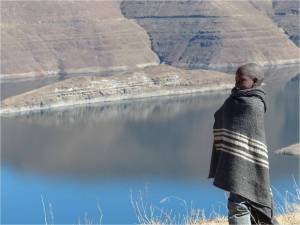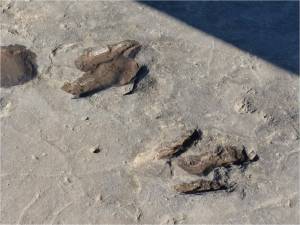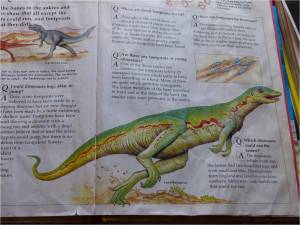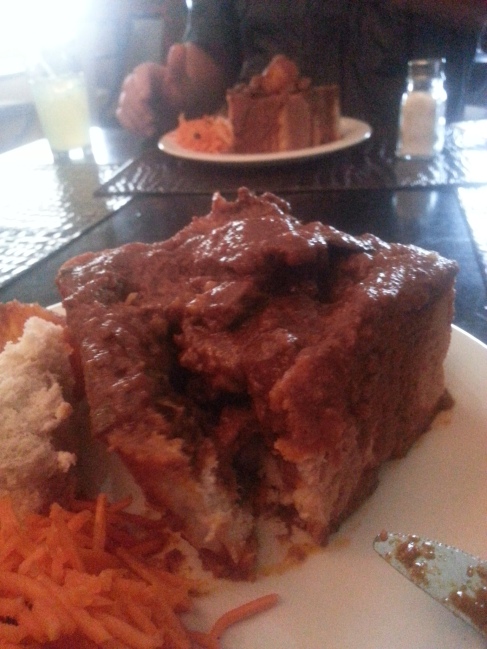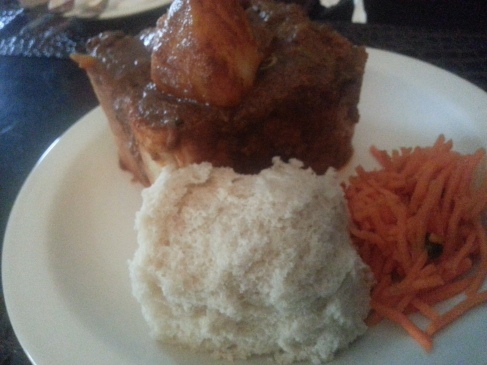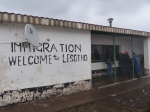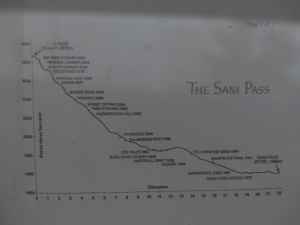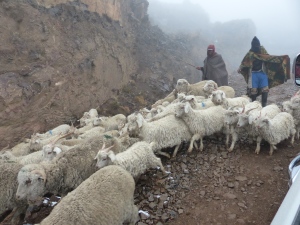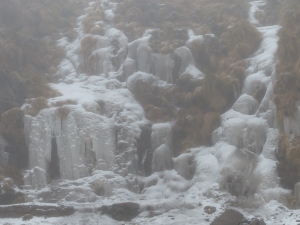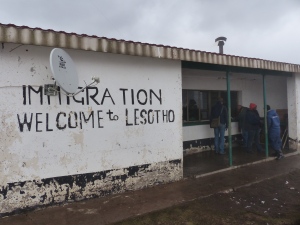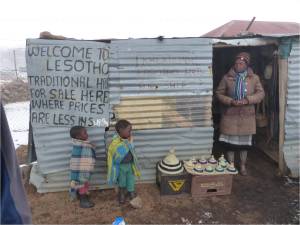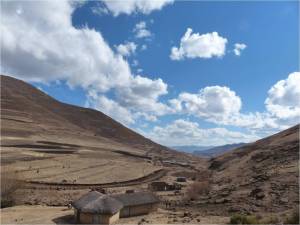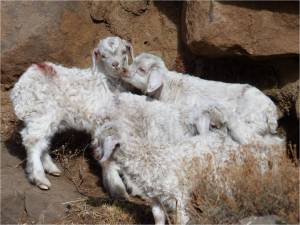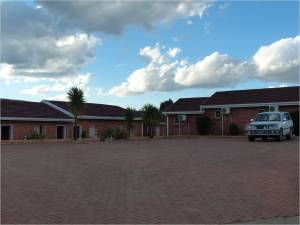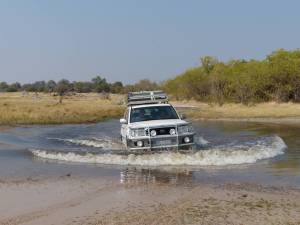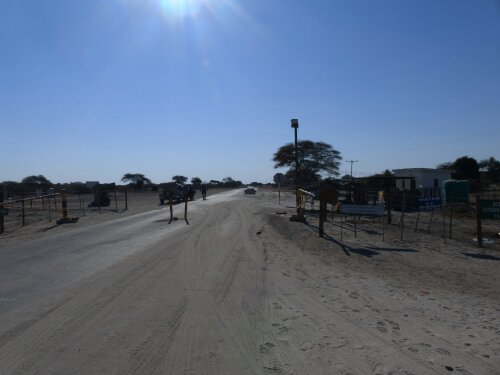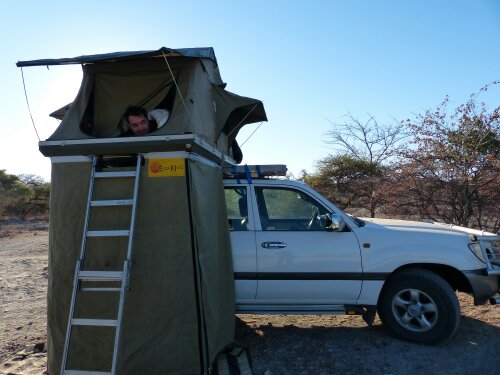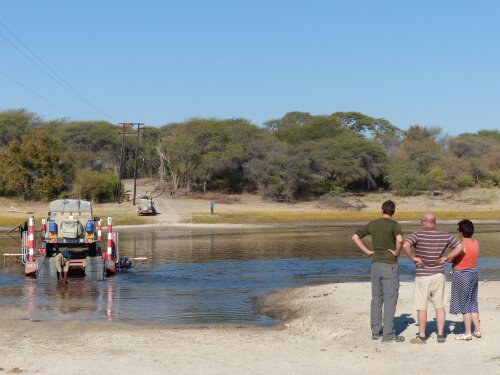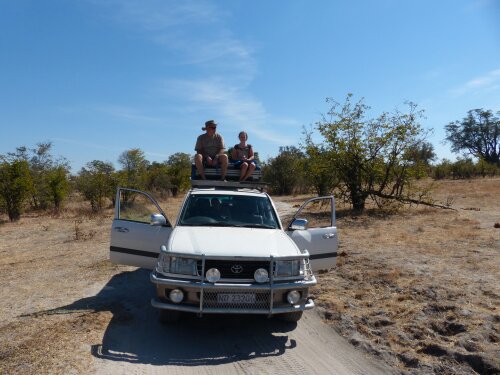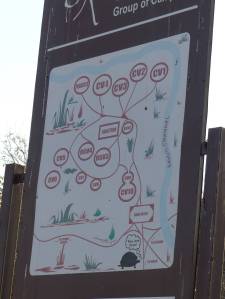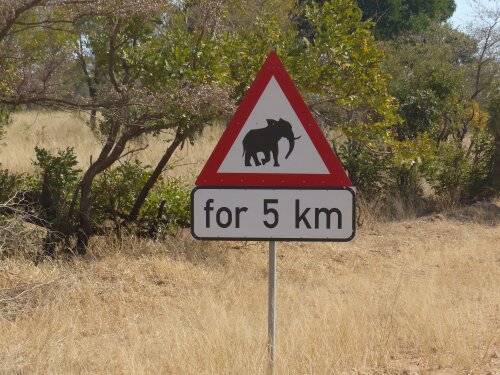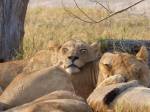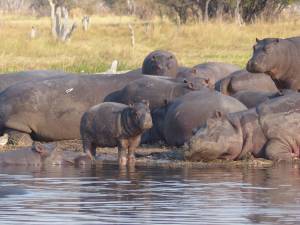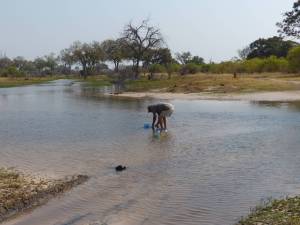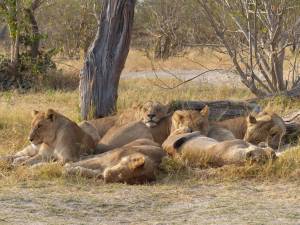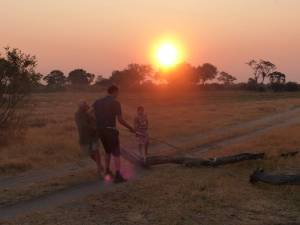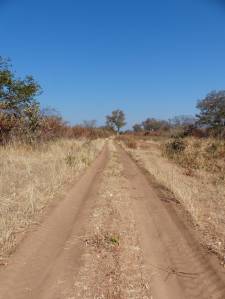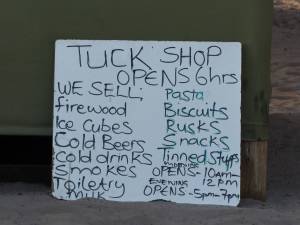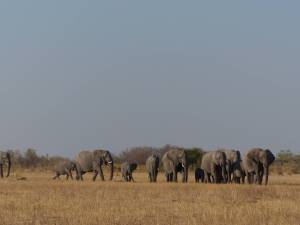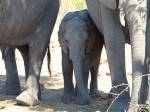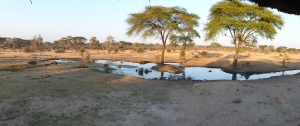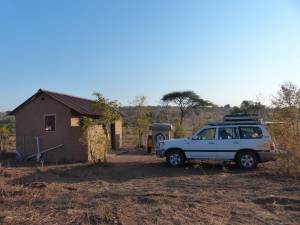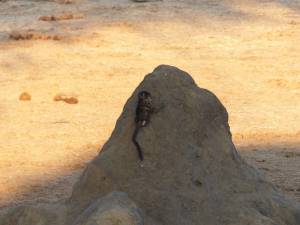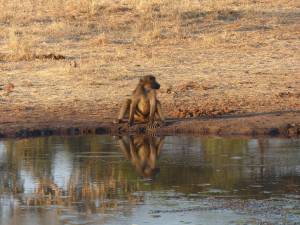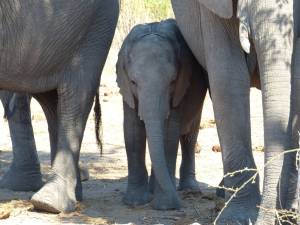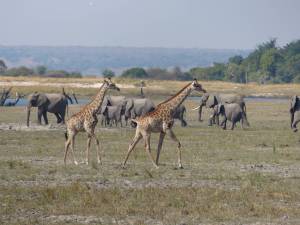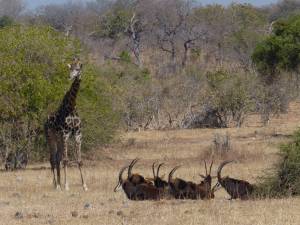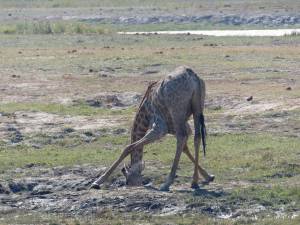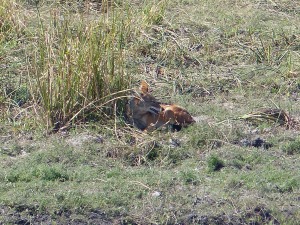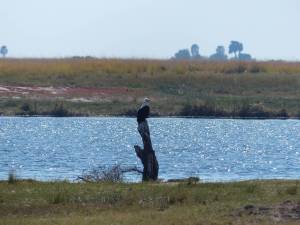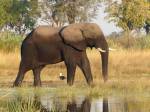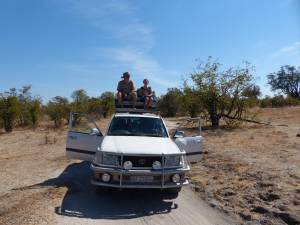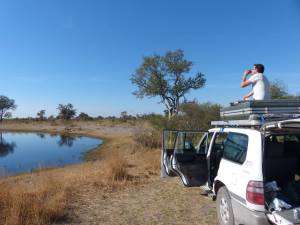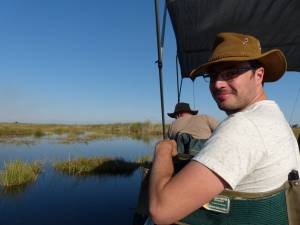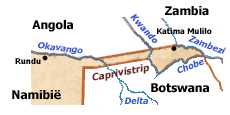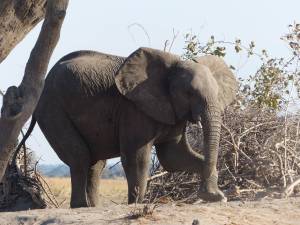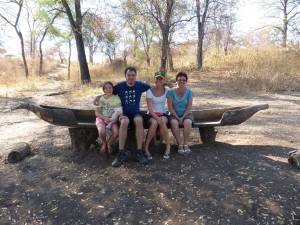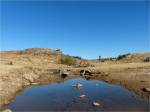
After our intriguing buffet breakfast and a heartfelt farewell to our hosts at the Buffalo hotel, we headed through to Thaba Tseka proper. We were grateful to find a petrol station selling diesel just in the town – hadn’t seen any of those en route yet – but there was not much else to hold our attention.
After leaving Thaba Tseka we made took the road towards one of the most spectacular spots in Lesotho – Katse Dam. The scenery en route continued to fascinate us. From the rolling valleys beneath the road to the freindly Basothos wrapped up in their blankets. We also had a chance to admire a form of art I had not yet seen – rondawel roof art. I particularly liked the metal rooster.
Katse Dam
A note on terminology: In South Africa “dam” is used to describe both the wall and the the water behind it. Chris, with his British and science background, is more particular and uses the word dam only in reference to the wall. The water is strictly called a resevoir. So, I apologise in advance if I use the word dam in the South African sense and cause any confusion.
Katse Dam, the highest in Africa, was completed in 2009 and is known as the heart of the Lesotho Highlands Water Project. It is a real thing of beauty. It stretches far beyond your line of vision, nestled high in the Maluti mountains. The striking blue water is very captivating and inviting – although I’m sure the water would have been freezing at this time of year!
We took in the view of the dam from the Katse Lodge. They have a lovely balcony with a tremendous view so its a great place to stop for a drink. (The view more than compensating for the rather average cup of coffee.) It is also apparently a lovely place to stay and had they not been fully booked we would definitely have spent the night.
We were disappointed not to have timed our visit better to be able to do the tour of the dam. There is a sweet little visitors center but if you arrive between tours there is not much information. The tour is a self-drive one and all we could do was look down jealously at those better prepared visitors driving their cars into the entrance in the dam wall. The tours are at 9am and 2pm on Mondays – Fridays and 9am and 11am on Saturdays, Sundays and Lesotho public holidays.
Searching for the Lesothosaurus
We left Katse Dam thinking we had seen the best that Lesotho had to offer us in our short trip. Little did we know that, just a little distance from the South African border, we would discover something unbelievable.
We were just outside Hlotse in the Northwest of Lesotho when we saw a tiny sign pointing to a dirt track that said ‘dinosaur footprints’. It was too intriguing to ignore. About 500m down the road we found the reception – a little hut with a very friendly attendant. I can’t remember his name but his enthusiasm for his country and the conservation of the dinorsaur prints will stay with me forever.
As we set off from reception for our short walk to the prints I must admit I was not very hopeful. What sort of prints would we see in a place like this? Chris was so uninspired he didnt even get out of the car. We dutifully followed down the bank and across to a little stream.
As we got to the spot, our guide started sweeping away some of the water and revealed clear, large and fascinating dinosaur footprints. There were a several different prints and each of the walking patterns of the of the relevant dinosaur was enthusiastically demonstrated to us by our guide – hopping from print to print in a very animated manner. We could then all follow suit and have our turn to pretend to be the dinosaurs. This was a totally unique experience. There were no fences, demarcated areas, signs, people stopping you touching things. Nothing. Just a piece of ancient history for you to enjoy. So different from our other dinosaur footprint experience in Bolivia.
There are obviously big questions about conservation of these and similar prints around Lesotho. Our guide explained that there is no funding and they do their best with the intake from tourists. The water (and probably the tourist dinosaur re-enactments) are all contributing the the erosion of the prints. Our guide spoke about how they need help diverting the water so that the prints can be protected. It seems like an obvious thing to support but a real dilemma about how he can raise the money. We left a donation and hopefully if you are reading this you will also stop by and show support.
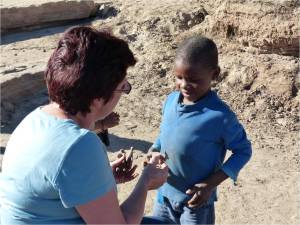
A local boy selling clay animals to dinosaur tourists. My mom paid R1 for a little cow but one cant help think the children should be making clay dinosaurs.
(Em)
